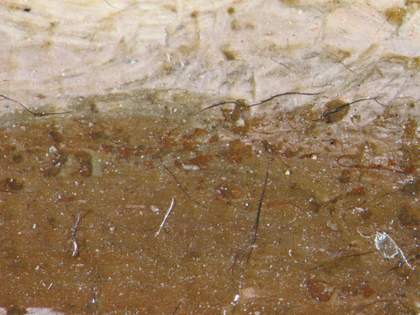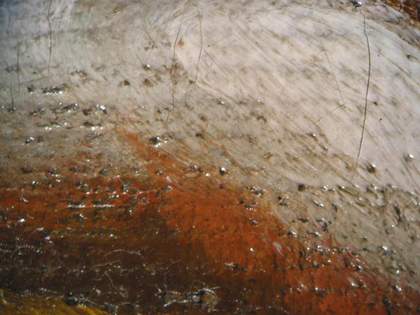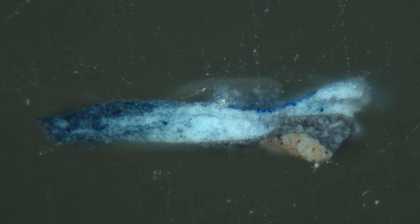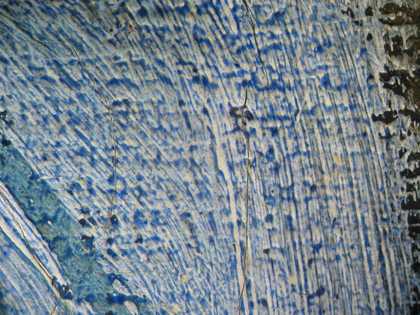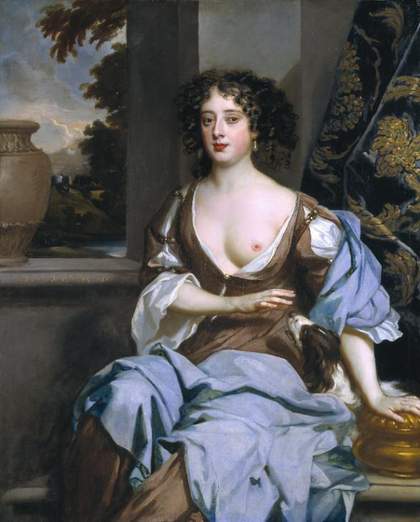
Fig.1
Sir Peter Lely 1618‒1680
Portrait of an Unknown Woman
c.1670‒5
Oil paint on canvas
1251 x 1003 mm
T00755
This painting (fig.1) is in oil paint on a single piece of canvas measuring 1251 x 1003 mm. The linen is coarse and plain woven, with approximately 14 vertical and 12 horizontal threads per square centimetre. There is cusping of the canvas weave on all edges, indicating that the dimensions are original or near-original (fig.2).1 The tacking margins are missing, and the stretcher appears to date from the time of the glue composition lining, probably the late nineteenth or early twentiethcentury.
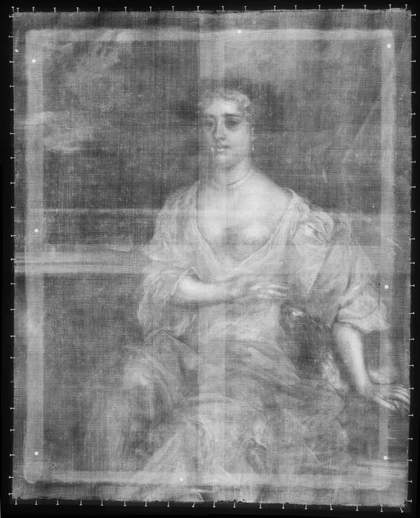
Fig.2
X-radiograph of Portrait of an Unknown Woman
The ground is opaque buff colour. It was applied about 70 microns thick, and it has a smooth surface (fig.3). The colour was mixed from lead white, Cologne earth, sienna and other ochres, charcoal black and smalt, all bound together in oil. Its colour is not visible as part of the composition.
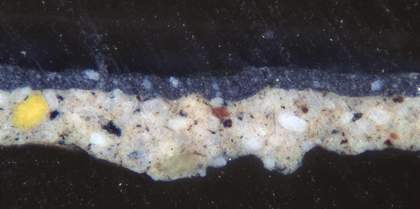
Fig.3
Cross-section from blue drapery, showing from bottom: buff coloured ground; blue paint
As we have found consistently with Lely’s paintings in this study, no underdrawing is detectable with infra-red or microscopic examination (fig.4).
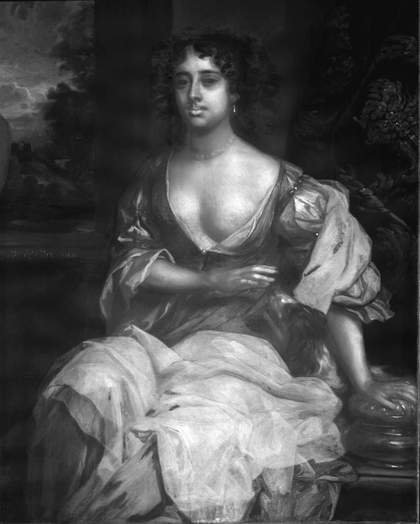
Fig.4
Infra-red reflectograph of Portrait of an Unknown Woman
The figure was laid in with reddish brown paint, which can be seen at high magnification beneath the features in the face (fig.5). Very often in Lely’s work this brick red first painting was left to show as the shadowed outlines of the flesh tones. In this painting we can see something of this technique in the flesh tones, though the artist went on to strengthen these lines with a similar colour at a later stage of painting (fig.6).2 Elsewhere, low-key underpainting is visible in cross-section in some areas, for example there is a layer of opaque pale grey beneath the final paint of the sky, but it is not extensive or elaborate (figs.7 and 8). The painting was mainly built up from thick, opaque tones applied wet-in-wet to the primed canvas, followed by glazing in some areas to intensify the colours (fig.9). Both the X-radiograph and the infra-red reflectogram reveal alterations to the portrait as painting progressed: the sitter was originally wearing a pearl choker, the fingers of her right hand were lengthened at a late stage of painting (fig.10) and the folds of the drapery over her knees and legs underwent many minor adjustments.
All the paint is well bound in oil and is composed of complex mixtures of pigments. The pale blue drapery is composed of three tones of blue made from mixtures of lead white with indigo; the tones were worked into one another on the prepared canvas. Finally they were glazed with two types of translucent blue paint: a mixture of ultramarine, lead white, black and smalt for the lights and probably indigo only for the darks. The ultramarine glazes survive only in the troughs of the brushwork, and the indigo glazes have been worn away or have faded (fig.9). When viewed in cross-section, none of the glazes fluoresces in ultraviolet light, indicating a straight oil binder without resinous additives. The brocade curtain behind the sitter was made from several tones of opaque dark grey mixed from lead white, black, red lake (very finely ground but intensely coloured), and yellowish brown earth colour. Detailing of the yellow brocade was applied on top, followed by the dark outlines. There is no evidence that the curtain was ever glazed. The brown of the dress was mixed from lead white, ultramarine, sienna, red ochre, glassy particles, black, yellow lake, vermilion and cologne earth. Here and there traces of an intense red glaze are visible at high magnification (fig.11). Materials analysis indicates that this glaze was applied by a later hand: it passes into cracks in the paint film and it contains the pigment cobalt blue, which did not exist before the early nineteenth century.
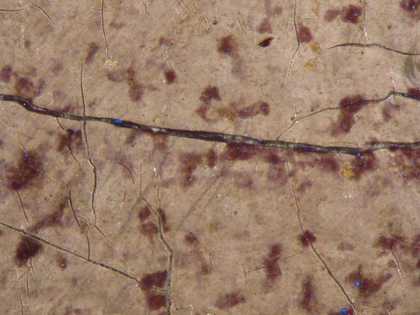
Fig.11
Red lake glaze (not original) remains in cracks in brown skirt, photographed at x16 magnification
The whites of the sitter’s eyes are modelled in three opaque shades of blue: light greenish blue, darker greenish blue and a purer blue tone, which looks like ultramarine (figs.12 and 13). Half-shadows in the face are highly coloured: light green between the inner corner of the eye and the nose; purplish flesh-tone for the eye sockets.
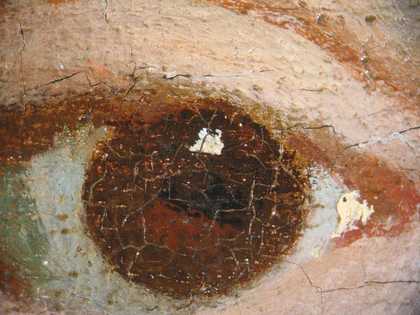
Fig.12
Three shades of blue used in the sitter’s right eye, plus brick red paint reinforcing the socket, photographed at x8 magnification
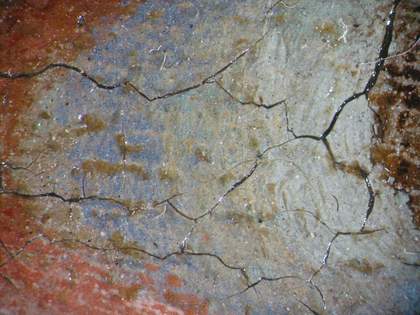
Fig.13
Sitter’s right eye showing ultramarine blue used to describe the curve of the eyeball, photographed x20 magnification
The painting was cleaned at Tate in 2001, during which treatment much disfiguring overpaint, applied by later hands, was removed from the blue skirt, the architectural background and the dark shadows in the lower left corner.
August 2005

